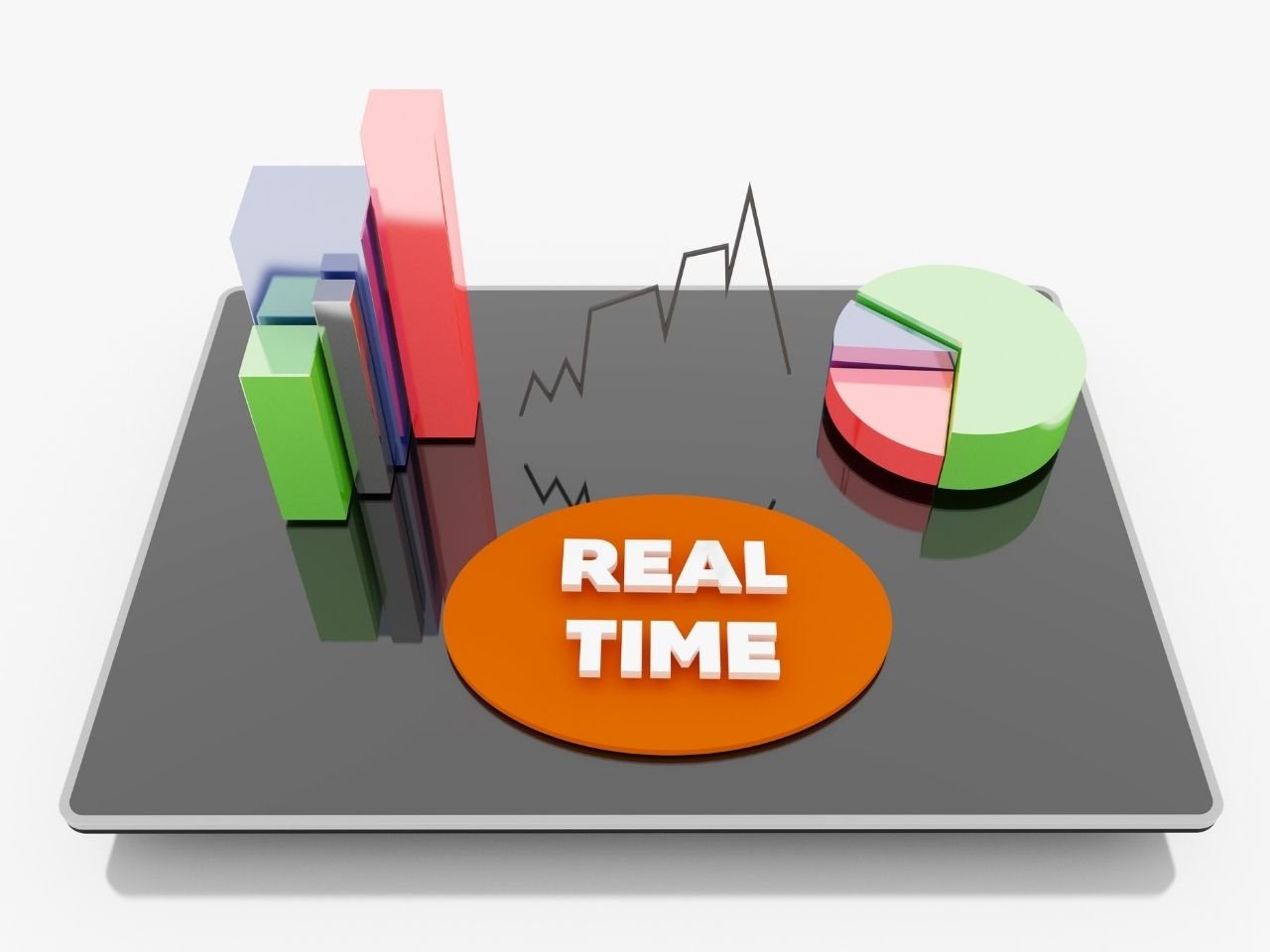Big data is the reason that large enterprises exist. Coca-Cola has customers in 206 countries, and it’s through collecting and analyzing data that it can predict customer behavior to ensure they have the right inventory and sponsor the right events worldwide.
As an organization, collecting and analyzing data is one thing you need to do to grow your business. This article explains big data and how you can use it to drive success.
What is big data?
Big data is a collection of structured and unstructured data gathered by organizations to extract valuable information that aids predictive modeling, machine learning, and big data analytics projects. The amount of data collected isn’t important, but what the organization does with the data is what matters.
In today’s competitive business environment, using big data has become very important as companies try to outperform their peers. Existing competitors and new players in most industries use the strategies derived from analyzed data to compete and set themselves up for success.
While the phrase “big data” is relatively new, collecting and storing data sets for eventual analysis has been around for a while. Companies have used spreadsheets and basic data science analytics to make informed decisions. The concept of big data started gaining momentum in the early 2000s with the advent of social media. People started realizing how much data we generate daily and how it can provide useful insights into consumer behavior and market conditions.
Back then, companies used long and expensive processes to manually sort the data. Still, machine learning and data science marketing tools have made it easier for businesses to access insights almost instantly.

The three Vs of big data
There are 3 fundamental properties that can help define the term big data. These are dubbed the 3Vs: volume, velocity, and variety. These are crucial to determining how we measure big data and how different it is from traditional data. Let’s now review each aspect in detail.
Volume
The amount of data collected is immense. It’s believed that more than 2.5 quintillion bytes of data are created each day, and as of 2025, 463 exabytes of data will be generated daily (source: Raconteur). Organizations get data from various sources such as business transactions, online customer interactions, machine data, and information from sensors. Storing this information would have been a problem in the past, but technologies have simplified the exercise.
As a result, it’s now not uncommon for organizations to have terabytes of data stored in servers and storage devices. This data helps organizations shape the future and make informed business decisions while tracking their progress.
Velocity
The growth of data and its resulting importance has changed how we see and handle data. There was a time when people didn’t see the importance of data in the business world, but with improvements in how we collect it, we’ve come to depend on it for critical corporate processes. Organizations get data from business operations, application logs, social media, and web activity. The flow of data is huge and continuous.
The term velocity refers to the speed of data generation. It essentially measures how fast the data trickles in. Data flows in at unprecedented speeds. Some data comes in real-time, whereas at other times, it comes in fits and starts and is delivered to us in batches. This data must be dealt with promptly to ensure organizations gain maximum value. How effectively a data analytics manager processes the data determines its potential, with technologies like RFID tags, smart metering, and sensors making it easy to deal with continuous data sets in near real-time.
Since not all platforms will receive data at the same pace, you shouldn’t generalize or jump to conclusions without getting all the facts and figures.
Variety
During the earlier days, data was gathered from one source and stored in one format. It used to take the shape of database files. Right now, data is available in different formats – from structured data sets and numerical data found in traditional databases to unstructured data in non-traditional forms such as email, video, audio, text documents, and financial transactions.
Variety refers to the heterogeneous nature of structured and unstructured data and its sources. Nowadays, data in the form of photos, videos, PDFs, monitoring devices, and emails are also being considered when analyzing business operations. Such unstructured data sets are difficult to process, but you cannot ignore them since they are crucial in understanding customer behavior and market conditions. They also pose challenges in storage and require more analytical skills to decipher the data. Rather than spending a lot of time and effort trying to make sense of the data, most organizations pay for big data analytics services to make the data more manageable.

The three types of big data
Now that you know what is big data analytics from the definition of the 3Vs, let’s review the types of big data an organization can collect and analyze to improve its operations.
Customer
Customer data is the behavioral and demographic information about customers that businesses and marketers collect to understand and engage their customers. Customer data is the cornerstone of any successful business strategy, and data driven-organizations take the necessary steps to gather enough customer data to enable them to improve the customer experience and fine-tune their business operations.
Financial data
Financial data is information about an organization that tells you about its financial health and performance. These datasets are used by management to analyze business performance and determine if you must alter the strategies and tactics. Organizations outside the business would look at the financial data to judge its creditworthiness and determine if it’s okay to invest in the company.
Some important forms of financial data include equity, assets, income, cash flow, and expenses.
Operational
Operational data provides organizations with real-time information to run their operations effectively. It includes information on a company’s direct competitors, supplier information, labor statistics, accounting data, and projections of needed resources.
Information on direct competitors helps organizations make their products superior, while accounting and labor data help with the internal control of productivity and finances.

Why is it important?
Big data is delivering significant value to the organizations that have completed a project. Let’s now take a look at how big data can help you grow your organization.
Specific targeting
One of the things web analytics helps you with is understanding your customers. You will know where they are from, their online behavior, and other features that make them unique. This will make it easy for you to target them since you’ll know how to reach them and the type of content that appeals to them.
Our blog, What Is Customer Segmentation, and How Can It Help Your Business?, explains how to segment your audience for specific targeting.
Customized content
Netflix employs big data to improve the user experience by offering customized content. It analyzes program viewership to understand trends in content consumption. It then uses this information to recommend specific shows the user will enjoy.

Better optimization
Big data analytics will also help you identify opportunities and inefficiencies in your marketing practices. For example, data analytics can inform you that your social media content isn’t reaching the right people, but your email marketing strategy works properly. With this information, you decide to spend more on the strategies that make your business grow and less on the things that don’t work.
Streamlined operations
With the speed of most data analytics technologies and the ability to process new data sources, organizations can analyze information quickly and make informed decisions based on what they have learned.
Real-time user behavior
The more an organization learns about its customers, the more competitive it becomes. Every day, companies collect more data about their customers, which gives valuable insights into their behavior. You will learn what makes them happy, the products they like, and the content that appeals to them. You will also learn the best moments to up-sell them so that you can send lead nurturing emails to spur those conversions.
But you must get it right!
Data analytics will only help you grow your company if implemented properly. You need the right tools to collect and analyze the data to ensure you derive the right insights to inform your corporate decisions.

Become the master of data
Data is your ticket to audience insights, interests, behaviors and more! This information can help you turn your marketing strategy into one that is able to deliver the right message in the right place at the right time quickly and efficiently – presenting you as a business that truly cares about its customers. Don’t let these opportunities escape you! Learn more in Data and Web Analytics: The Complete Marketer’s Manual.
Data is one of the most important assets you have as a company. If you want to take control of your data, the team at Growth Marketing Genie can help. We offer big data analytics services that will help you make sense of all the data you collect from your customers and business operations.
Do you need help to improve your data collection and analytics? Get in touch with us to learn more today!

Book in a Free Consultation
